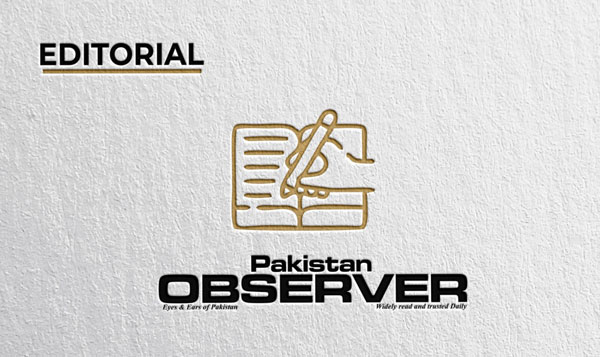THE deliberations and decisions of the National Economic Council (NEC), the highest decision-making body in the realm of economy, offer bright prospects for an otherwise bleak economic scenario amid serious questions about the ability of the Government to pursue its vision. The meeting chaired by Prime Minister Shehbaz Sharif approved national development outlay of Rs. 2.79 trillion for the next financial year with Minister for Planning and Development Prof. Ahsan Iqbal expressing confidence it would cross the mark of Rs. 3 trillion as KP and Punjab interim governments would be presenting budgetary estimates just for four months and not for the entire year. It also granted approval for launching 5Es Framework and 2035 Outlook which was described by the Minister for Planning as a “defining moment” for the country as the nation would have to take a decision whether to maintain the status quo in the next 10 years by adhering to $570 billion economy and 40pc poverty or jack up the size of the economy up to $1 trillion and reduce poverty to 15 percent by 2035.
The 5Es and 2035 Outlook show the Government definitely has a vision to take the country forward in near, medium and long term basis provided the goals set are pursued religiously. The 5Es approved by the NEC include boosting exports from the existing $30 billion to $100 billion in the next 12 to 15 years. The target is not that ambitious for a country with promising manpower and agricultural potential but how can we meaningfully increase exports when there has been an alarming surge in cost of production ranging between 100 to 150 percent during the last 18 months. It is because of this that the only argument offered by the pro-devaluation lobby that it would help increase exports has not materialized so far despite massive depreciation in the value of rupee during the last two years. The second is e-Pakistan to ensure digital transformation and this is not mere slogan as the Government has committed to offering mega incentives for the IT sector in the next budget which demonstrate the government’s commitment to nurturing the growth of the IT industry and creating a favourable environment for innovation and entrepreneurship. There is no doubt that the IT sector has the potential to help resolve economic and financial woes of the country but it is also a fact that we have not been able to realize this potential over the years due to conflicting policies and prohibitive taxation. The proposed incentives for the sector, plan to impart targeted IT training to the youth and introduction of a fixed tax regime could make a difference but much depends on the overall policies and approach of the Government as the sector cannot thrive in the presence of an uncertain environment. The very fact that Pakistan ranks 04 in the global ranking (after the US, UK and Brazil for freelancing services but its reputation as a credible and reliable provider of IT services received a serious jolt when the Government imposed a total ban on Internet services in the wake of May 09 violence, dealing serious blows to individual freelancers as well as companies engaged in businesses with the rest of the world. There are credible reports that many of the clients shifted their focus to other countries because of the negative impact of the ban on their businesses. The third E is the environmental protection and it is encouraging that the country is doing well in the area despite its limited resources. Under the fourth E, the government would slash its reliance on fossil fuel as Saudi Arabia recently reduced its production, paving the way for increased POL prices in the international market up to $100 per barrel till the end of the year. The Government has wisely decided not to construct new plants on imported fuel and there would be focus on alternative energy resources. The decision of the NEC to close markets and commercial activities by 8.00 p.m, replacing bulbs with LEDs and placing efficient geysers to save $1 billion is a step in the right direction but implementation of the energy conservation measures is questionable as successive governments could not convince traders to comply with this, otherwise, international practice of closure of businesses at sunset. The 5th E seeks equity in development whereby special allocations are being made for 20 poorest districts of the country. Economic growth is also deeply linked to faithful utilization of developmental allocations and a firm pledge not to divert these allocations for other purposes as we have been doing for many years.










